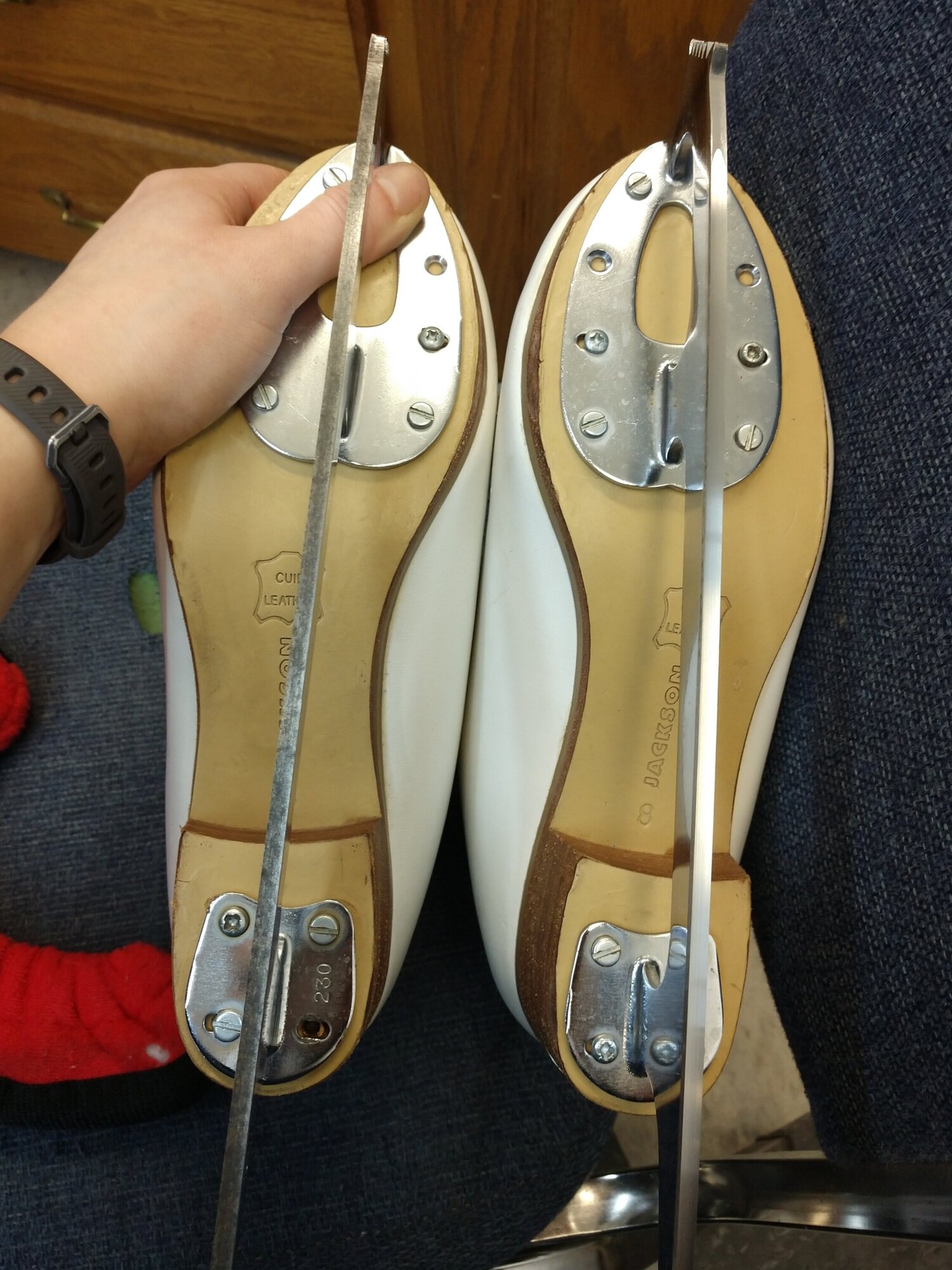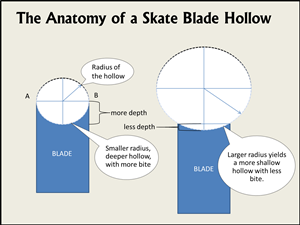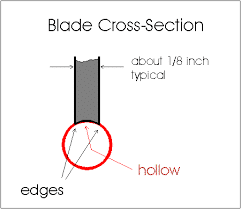Yes, hockey blades are sharp. They need to be for effective skating.
Sharp blades allow players to make quick turns, stop suddenly, and glide smoothly. Hockey is a fast-paced, intense sport. Players rely on their blades for control and speed. But just how sharp are these blades? Can they actually cause harm?
Understanding the sharpness of hockey blades can help both players and fans appreciate the skill involved. In this post, we’ll explore the importance of blade sharpness in hockey. We’ll look at how sharp blades enhance performance and safety. So, whether you’re new to hockey or a seasoned player, this information will be valuable. Let’s dive into the world of hockey blades and discover why their sharpness matters.
Blade Design
The design of hockey blades is intricate and essential for optimal performance. A well-designed blade can make a significant difference in how a player skates and handles the puck.
Materials Used
Hockey blades are crafted from various materials. The choice of material impacts the blade’s strength, flexibility, and sharpness. Here are the most common materials used:
- Steel: Most hockey blades are made of high-grade steel. Steel is durable and can be sharpened to a fine edge.
- Carbon Fiber: Some modern blades incorporate carbon fiber. This material is lightweight and strong, providing a good balance of performance and durability.
- Titanium: Titanium blades are rare but offer excellent strength and resistance to corrosion.
Construction Process
The construction process of hockey blades involves several steps. Each step ensures the blade’s quality and performance:
- Forging: The raw material, usually steel, is heated and shaped. This process aligns the metal’s grain structure, increasing strength.
- Tempering: The forged blade is then tempered. This involves heating it to a specific temperature and cooling it. Tempering improves the blade’s toughness and flexibility.
- Grinding: The blade is ground to the desired shape and thickness. Precision is key in this step to ensure a uniform edge.
- Sharpening: Finally, the blade is sharpened. Sharpening creates the fine edge needed for cutting through ice effectively.
Each step in the construction process contributes to the blade’s overall performance. A well-constructed blade ensures players can skate swiftly and maneuver the puck with ease.

Credit: www.skatersedgewny.com
Sharpness Levels
Hockey players need their blades to be sharp. The sharpness of a hockey blade can impact a player’s performance. Let’s dive into the various sharpness levels and their importance.
Measuring Sharpness
Measuring the sharpness of hockey blades can be done using different methods. Some common ways include:
- Visual Inspection
- Touch Test
- Professional Tools
Visual inspection involves checking the edges for nicks and damage. A touch test can tell if the blade feels smooth or rough. Professional tools give precise sharpness measurements.
Effects Of Dull Blades
Dull blades can negatively impact a player’s performance. Here are some effects of using dull blades:
- Poor Speed and Agility
- Less Control
- Increased Risk of Injury
With dull blades, players can’t skate as fast. They also struggle with quick turns and stops. This can lead to poor performance and possible injuries.
Sharpening Techniques
Hockey blades need regular sharpening to maintain performance. Sharpening helps players glide smoothly and turn quickly on the ice. There are two main methods to sharpen hockey blades: manual sharpening and machine sharpening.
Manual Sharpening
Manual sharpening involves using a sharpening stone or file. This method requires skill and patience. You need to hold the stone at the right angle. Rub it along the blade’s edge to create a sharp finish. This method is best for minor touch-ups.
Many players prefer manual sharpening for its precision. It allows for a customized edge. But it can be time-consuming. It is not recommended for beginners. Proper technique is crucial to avoid damaging the blade.
Machine Sharpening
Machine sharpening is more common and quicker. It uses a motorized wheel to sharpen the blade. You place the skate in the machine. The wheel grinds the blade to the desired sharpness. This method provides a consistent edge.
Most sports shops offer machine sharpening services. It is efficient and easy. You can also buy a machine for home use. This is practical for players who skate often. Machine sharpening ensures uniform edges and saves time.
Safety Concerns
Hockey blades are sharp. This sharpness is crucial for performance. But it also raises safety concerns. Players and handlers need to be cautious. Proper handling can prevent many injuries.
Preventing Injuries
Sharp hockey blades can cause serious injuries. To stay safe, players should always wear proper gear. This includes:
- Helmets
- Gloves
- Protective padding
Never skate without these. Even during practice. Always check your gear for damage. Replace worn-out equipment.
Proper Handling
Handling hockey blades correctly is essential. Here are some tips:
- Always carry blades in a protective cover.
- Store skates in a safe place, away from children.
- Use a towel to dry blades after each use. This prevents rust.
- Inspect blades regularly for nicks or damage.
Training is also important. Learn how to sharpen blades properly. Or get them sharpened by a professional. This ensures blades are safe and effective.
By following these steps, you can minimize the risk of injuries. Always be mindful of the sharpness of hockey blades. Safety comes first.
Performance Impact
Hockey blades are sharp. This sharpness greatly influences a player’s performance on the ice. It impacts how efficiently they can skate and how well they play during a game. Let’s explore the performance impact of sharp hockey blades.
Skating Efficiency
Sharp blades allow skaters to glide smoothly on the ice. They cut through the ice with less resistance. This means players use less energy to move. They can skate faster and with more precision. Blunt blades drag on the ice, slowing the player down.
Turning and stopping are also easier with sharp blades. Skaters can make quick changes in direction. This agility is crucial in a fast-paced game. Sharp blades help players maintain control and balance. They reduce the risk of slipping and falling.
Game Performance
Having sharp blades can improve game performance. Players can react quickly and effectively. They can chase the puck and evade opponents with ease. This can make the difference between winning and losing.
Passes and shots are more accurate with sharp blades. Players can maneuver better around the rink. They can make precise movements and execute complex plays. Blunt blades can hinder these actions, impacting the overall game strategy.
In summary, the sharpness of hockey blades plays a significant role in a player’s performance. It affects their skating efficiency and game performance. Keeping blades sharp is essential for any serious hockey player.

Credit: www.figureskatingetc.com

Credit: weekendwarriorshockey.com
Frequently Asked Questions
Are Hockey Blades Sharp?
Yes, hockey blades are sharp. They need to be for good performance.
How Sharp Are Hockey Skates?
Hockey skates are very sharp. They can cut through ice easily.
Why Do Hockey Blades Need To Be Sharp?
Sharp blades provide better control and speed on the ice.
Can You Cut Yourself With Hockey Skates?
Yes, you can cut yourself with hockey skates. Handle them carefully.
How Often Should Hockey Blades Be Sharpened?
Sharpen your blades every 15-20 hours of ice time.
Can You Skate With Dull Blades?
Skating with dull blades is hard. You will have less control.
Do New Hockey Skates Need Sharpening?
Yes, new skates often need sharpening before use.
How Do You Know If Hockey Blades Are Dull?
You will feel less grip and control on the ice.
Can You Sharpen Hockey Skates At Home?
Yes, but it’s best done by a professional for best results.
Conclusion
Hockey blades are indeed sharp, designed for precision and speed. Proper maintenance keeps them in top condition. Always handle with care to avoid injury. Sharpen regularly for the best performance on ice. Respect the blade’s sharpness to enhance your game safely.
Remember, safety first, fun second. Hockey is thrilling, but preparation is key. Stay informed, stay safe, and enjoy the sport. Happy skating!




